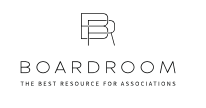
Nicholas Fleury
Increased global competition, the race for talent, and disruptive innovation create opportunities for associations and professional societies to become more essential to members. Simply put: It’s all about making your members happy, providing them with what they need, and helping to build their capacity so they can do their job better — and sometimes faster. Membership is the lifeblood of any association and never before have organizations been faced with so many membership challenges.
The way that the International Organization for Standardization (ISO) — an independent, non-governmental organization with a membership of 163 national standards bodies — is aiming to overcome some of those challenges offers a case study.
ISO’s Strategy
Through its members, the Switzerland-based association brings together experts who develop voluntary, consensus-based international standards that support innovative, economic, social, and environmental development and provide solutions to global challenges. Offering a range of services to support its members, ISO developed a five-year strategy to have market-relevant ISO International Standards used everywhere. ISO also wants to ensure that members effectively engage stakeholders and partners, believing that a strong foundation in people and organization development, effective use of technology, and a focus on communication will help it achieve its goals.
Nicolas Fleury, ISO deputy secretary-general, says: “A particularity of ISO is that, for us, international growth is not so much about growing our membership base (we already have members in 163 countries), but rather about strengthening our members (and) the network they form and increasing the participation of all interested parties (industry, consumers, governments, organizations, associations, etc.) in the development of ISO Standards and their use worldwide. This capacity-building is a large part of our strategy moving forward considering that, as a network of members, our success is reliant on the success of each of our individual member organizations.”
When it comes to the strengthening of its membership and the increased dissemination of standards globally, one of the major challenges for ISO is the diversity of national contexts. “Our members can range from big or small organizations, governmental or non-governmental, private or public, and the challenges and opportunities in every national context are different,” says Fleury. “In this respect, we cannot come up with a ‘one-size-fits-all’ approach. Having said that, obviously many challenges are shared and we do our utmost to find the commonalities between our members and stimulate the sharing of best practice stories and experiences in order to take advantage of the power of our network. Being part of an international organization such as ISO allows for a valuable information exchange and promotes peer-to-peer exchange — this is something we are very keen to foster.”
Maximising Benefits for Members
“There are a number of things we explore when we look at how we are strengthening our global community including, for example, the reputation of the organization, increased visibility of ISO and its members, increased understanding of the value of ISO Standards and their benefits, increased use of standards, and increased participation in standards development,” explains Fleury. “One way we look at participation, for example, is to explore how regularly a member proposes new ideas for standards [in our system our members suggest new work that they feel would have a positive impact and the rest of the ISO members vote on whether they agree] or how often a member comments on other proposals and draft standards. These kinds of measures help us to understand, and therefore, improve member engagement.”
Recently, ISO opened a regional office in Singapore. Growing internationally often means having a better visibility for your community and enhancing your presence in geographical areas that you might have never thought about before. It’s one of the ways you can provide value to your members or partners, as you help an exponentially greater number of people find the answers to the questions or challenges they have, thus improving the reputation of your organization. “Obviously we were aware that the Asia-Pacific region has a lot of potential in terms of growth in general, but also in terms of the dissemination and development of ISO Standards,” says Fleury.
One aspect of ISO’s strategy is to reinforce the network it has created through support and initiatives at the regional level for all areas of the world. This is achieved through various approaches depending on the particularities of each region. “As part of this approach on regional engagement, we decided to run a five-year pilot office to support the Asia-Pacific region,” explains Fleury. “When it came to the location of the pilot, we wanted a place that could serve as a central hub for the region (with) easy to access from an international perspective and with good infrastructure.”
The location of Singapore, in addition to its excellent transportation links and international airport, had an impact on the decision to set up an office there. “Our member in Singapore, Enterprise SG, as well as different initiatives from the government of Singapore — for example through EDB (the Economic Development Board) and STB (the Singapore Tourism Board) — which provided assistance and guidance on topics such as company registration, office space, hotels, and meeting places, helped us to set up this office, which aims to promote ISO and international standards, develop collaboration and partnerships, and support training and technical assistance in the region,” concludes Fleury.
This article was contributed by Boardroom. It was edited for use in Communique.


